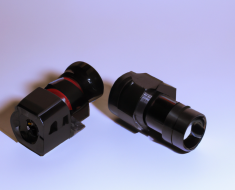“Secure storage for peace of mind.”
Storing Magazines in a Dry and Cool Environment
Properly storing magazines and ammunition is essential for ensuring their longevity and safety. Magazines are an integral part of any firearm, holding the ammunition that will be used during shooting. It is crucial to store magazines in a dry and cool environment to prevent damage and ensure they function properly when needed.
When storing magazines, it is important to keep them away from moisture and extreme temperatures. Moisture can cause rust and corrosion, which can damage the magazine and affect its performance. Extreme heat or cold can also have a negative impact on the magazine’s materials, potentially causing them to warp or become brittle.
To prevent moisture damage, store magazines in a dry environment with low humidity. Avoid storing them in basements or areas prone to leaks or flooding. Instead, opt for a climate-controlled space such as a gun safe or storage cabinet. If you live in a humid climate, consider using desiccant packs or dehumidifiers to keep the moisture levels in check.
In addition to moisture, extreme temperatures can also affect the performance of magazines. Store them in a cool environment away from direct sunlight and heat sources such as radiators or heaters. Avoid leaving magazines in your car or truck for extended periods, especially during hot summer months.
It is also important to keep magazines clean and free of debris. Regularly inspect them for dirt, dust, or other contaminants that may affect their function. Use a soft cloth or brush to clean the exterior of the magazine, being careful not to scratch or damage the surface.
When storing ammunition, it is equally important to keep it in a dry and cool environment. Ammunition is made up of components that can degrade over time if exposed to moisture or extreme temperatures. Proper storage will help ensure that your ammunition remains safe and reliable for use.
Store ammunition in a cool, dry place away from heat sources and direct sunlight. Avoid storing it in areas with high humidity or temperature fluctuations, such as attics or garages. Consider using an ammo can or storage box to protect the cartridges from moisture and physical damage.
It is also important to store ammunition in its original packaging whenever possible. This will help protect the cartridges from exposure to moisture and contaminants. If you need to transfer ammunition to a different container, make sure it is clean, dry, and free of any debris before doing so.
Inspect your ammunition regularly for signs of damage or deterioration. Look for dents, corrosion, or discoloration on the cartridges that may indicate they are no longer safe to use. If you have any concerns about the condition of your ammunition, err on the side of caution and dispose of it properly.
By following these simple guidelines for storing magazines and ammunition in a dry and cool environment, you can help ensure their longevity and safety. Proper storage will also help maintain their performance and reliability when you need them most. Remember to regularly inspect and clean your magazines and ammunition to keep them in top condition for years to come.
Using Proper Containers for Ammunition Storage
When it comes to storing magazines and ammunition, proper storage is crucial to ensure the safety and longevity of your firearms and ammunition. Whether you are a seasoned gun owner or just starting out, knowing how to store your magazines and ammunition correctly can make a big difference in their performance and durability.
One of the most important aspects of storing magazines and ammunition is using the right containers. Storing ammunition in the wrong type of container can lead to degradation of the ammo, which can affect its performance when fired. It is important to use containers that are specifically designed for storing ammunition, such as ammo cans or boxes.
Ammo cans are a popular choice for storing ammunition due to their durability and ability to keep out moisture and other contaminants. They come in various sizes and can be easily stacked for efficient storage. Make sure to label each can with the type of ammunition stored inside to keep things organized.
Another option for storing ammunition is using plastic or metal ammo boxes. These boxes are designed to hold specific quantities of ammunition and are often color-coded for easy identification. Some boxes even come with foam inserts to protect the rounds from bouncing around during transport.
When it comes to storing magazines, it is important to keep them clean and free from dirt and debris. Magazines should be stored in a cool, dry place to prevent rusting or corrosion. If possible, store magazines in their original packaging or use magazine pouches to protect them from damage.
It is also important to store magazines separately from ammunition to prevent any accidental discharge. Keep magazines unloaded when not in use and store them in a secure location away from children or unauthorized individuals.
Properly storing magazines and ammunition not only ensures their longevity but also helps prevent accidents and injuries. By using the right containers and following proper storage guidelines, you can maintain the quality and performance of your firearms and ammunition for years to come.
In conclusion, knowing how to properly store magazines and ammunition is essential for any gun owner. By using the right containers, keeping them clean and organized, and storing them in a secure location, you can ensure the safety and longevity of your firearms and ammunition. Take the time to invest in proper storage solutions for your magazines and ammunition, as it will pay off in the long run. Remember, safety always comes first when it comes to firearms and ammunition storage.
Organizing and Labeling Magazine and Ammunition Storage Areas

If you are a gun owner, it is crucial to properly store your magazines and ammunition to ensure safety and longevity. Proper storage not only helps prevent accidents but also protects your investment in firearms and accessories. In this article, we will discuss some tips on how to organize and label magazine and ammunition storage areas.
First and foremost, it is important to store magazines and ammunition in a cool, dry place. Extreme temperatures can degrade the quality of both magazines and ammunition, leading to malfunctions or even dangerous situations. Make sure that the storage area is not exposed to direct sunlight or moisture, as these can also have detrimental effects on your gear.
When storing magazines, it is helpful to label them according to their caliber or firearm compatibility. This will make it easier for you to quickly identify which magazine goes with which gun, especially if you have a large collection. You can use labels, stickers, or even colored tape to differentiate between different types of magazines.
For ammunition storage, consider using ammo cans or boxes that are specifically designed for this purpose. These containers are typically made of durable materials that can withstand rough handling and provide an extra layer of protection for your ammunition. Make sure to label the containers with the type of ammunition they contain, as well as the date of purchase or expiration if applicable.
It is also important to keep magazines and ammunition away from children or unauthorized individuals. Store them in a locked cabinet or safe to prevent access by curious hands. This will not only keep your gear safe but also prevent accidents or misuse.
To further organize your magazine and ammunition storage areas, consider using shelves, racks, or bins to keep everything neat and easily accessible. You can arrange magazines by caliber or firearm type, while keeping ammunition separated by type and quantity. This will help you quickly locate what you need when heading out to the range or for self-defense purposes.
Regularly inspect your magazines and ammunition for any signs of damage or wear. Replace any damaged or worn-out items immediately to prevent malfunctions or accidents. It is also a good idea to rotate your stock periodically to ensure that older ammunition is used first before newer purchases.
In conclusion, proper organization and labeling of magazine and ammunition storage areas are essential for gun owners. By following these tips, you can ensure the safety and longevity of your gear while making it easier for you to access what you need when you need it. Remember to store your magazines and ammunition in a cool, dry place away from children and unauthorized individuals, and regularly inspect your gear for any signs of damage. With a little effort, you can maintain a well-organized and secure storage system for your firearms accessories.
Rotating Ammunition Stockpile to Prevent Corrosion
If you are a gun owner, you understand the importance of properly storing your ammunition to ensure its longevity and effectiveness. One key aspect of ammunition storage is rotating your stockpile to prevent corrosion. By following a few simple steps, you can keep your ammunition in top condition for when you need it most.
First and foremost, it is crucial to understand the factors that can lead to corrosion in your ammunition. Moisture is one of the biggest culprits when it comes to causing damage to your bullets. When exposed to moisture, ammunition can become tarnished and corroded, leading to potential malfunctions when fired. Additionally, temperature fluctuations can also impact the quality of your bullets over time.
To prevent corrosion from occurring, it is essential to rotate your stockpile of ammunition regularly. By rotating your ammunition, you ensure that older bullets are used first, preventing them from sitting in storage for extended periods of time where they are more susceptible to damage. This practice also allows you to inspect each round for any signs of corrosion or damage before use.
When rotating your stockpile, it is important to follow a first-in, first-out (FIFO) system. This means using the oldest ammunition first and replacing it with newer rounds at the back of the storage area. By consistently cycling through your stockpile in this manner, you can ensure that all of your ammunition remains in optimal condition for as long as possible.
In addition to rotating your stockpile, there are other steps you can take to protect your ammunition from corrosion. Storing your bullets in a cool, dry place is essential to prevent moisture from seeping into the casings and causing damage. Investing in airtight containers or ammo cans can also help maintain the quality of your bullets by creating a barrier against environmental factors.
Regularly inspecting your ammunition for signs of corrosion or damage is another crucial aspect of maintaining a healthy stockpile. Look for any discoloration or pitting on the casings, as these are indicators that moisture may have infiltrated the rounds. If you notice any issues with your ammunition, it is best to dispose of them properly and replace them with fresh rounds.
By implementing these practices into your ammunition storage routine, you can ensure that your stockpile remains in top condition for when you need it most. Properly rotating your ammunition not only helps prevent corrosion but also allows you to stay organized and prepared for any situation that may arise.
In conclusion, taking the time to rotate your stockpile of ammunition is an essential part of proper storage practices for gun owners. By following a FIFO system, inspecting your rounds regularly, and storing them in a cool, dry place, you can protect your investment and ensure that your bullets are ready for use when needed. Remember, a little effort now can go a long way in preserving the quality and effectiveness of your ammunition in the long run.
Securing Magazine and Ammunition Storage to Prevent Unauthorized Access
When it comes to storing magazines and ammunition, it is essential to prioritize safety and security. Improper storage can lead to accidents or unauthorized access, which can have serious consequences. Whether you are a gun owner, collector, or enthusiast, it is crucial to follow best practices for storing magazines and ammunition.
One of the first things to consider when storing magazines and ammunition is the type of storage container you will use. It is recommended to use a locking storage container that is specifically designed for firearms and ammunition. This will help prevent unauthorized access and keep your items secure.
When selecting a storage container, make sure it is made of durable materials that can withstand the weight of magazines and ammunition. Look for containers that have a sturdy lock mechanism to prevent tampering. It is also important to keep the storage container in a secure location, away from children or anyone who should not have access to firearms.
Another important aspect of storing magazines and ammunition is organization. Keep your magazines and ammunition neatly arranged in the storage container to make it easier to locate items when needed. You can use dividers or trays to separate different types of magazines or ammunition for added organization.
It is also important to regularly check your magazines and ammunition for signs of wear or damage. Inspect the cartridges for any corrosion or deformities that could affect their performance. If you notice any issues, it is best to dispose of the damaged items properly and replace them with new ones.
Proper labeling is another key aspect of storing magazines and ammunition. Make sure each magazine or box of ammunition is clearly labeled with its contents and expiration date if applicable. This will help you keep track of inventory and ensure you are using the oldest items first.
To further enhance security, consider installing a gun safe or cabinet in your home to store your magazines and ammunition. Gun safes are specifically designed to securely store firearms, magazines, and ammunition while providing quick access in case of an emergency. Make sure the gun safe is bolted securely to the floor or wall to prevent theft.
In addition to securing your storage containers, it is important to follow local laws and regulations regarding firearms and ammunition storage. Some states have specific requirements for how firearms and ammunition should be stored, so be sure to familiarize yourself with these laws to avoid any legal issues.
Overall, proper storage of magazines and ammunition is essential for maintaining safety and security. By following these tips, you can ensure that your items are stored safely and securely, preventing unauthorized access and accidents. Remember to regularly inspect your items for wear or damage, organize them neatly in your storage containers, label them properly, and follow local laws and regulations for added peace of mind.







